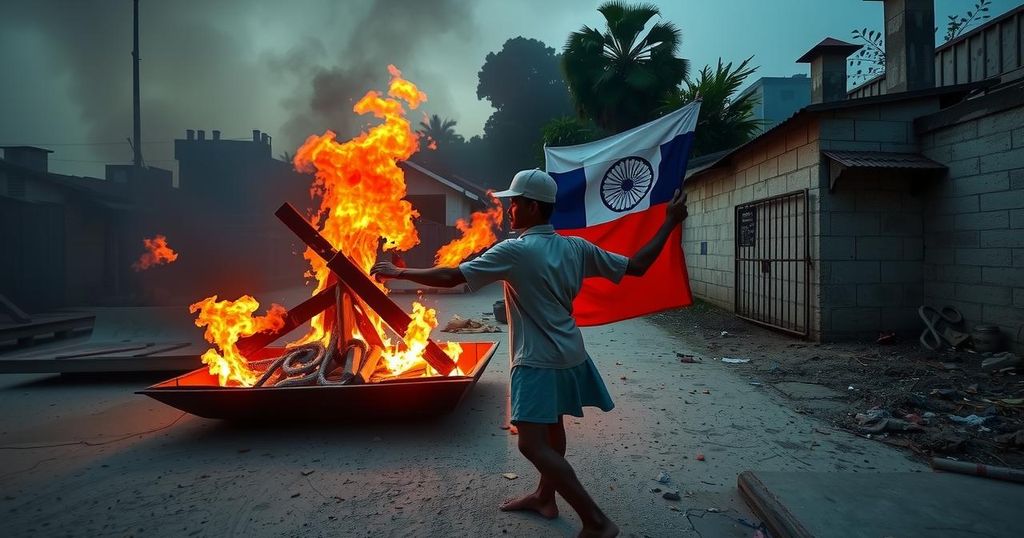The Arakan Army’s control over parts of Rakhine Province amid Myanmar’s civil war raises concerns about potential refugee flows into Bangladesh. This conflict has global neglect and highlights India’s complex involvement to safeguard its interests amidst regional instability and weapons trafficking issues, further complicated by China’s strategic investments.
The ongoing civil conflict in Myanmar, particularly led by the Arakan Army (AA), has significantly reshaped the security dynamics within Rakhine Province, which now sees the AA exerting control over substantial territories. This shift in power raises concerns for Bangladesh regarding a possible influx of Rohingya refugees as the junta has lost grip on the area amidst escalating tensions since the 2021 military coup. The situation in Myanmar highlights the global neglect of its turmoil, especially as other international conflicts dominate headlines.
Various ethnic armed groups, including the AA, have continuously engaged with the military regime since Myanmar’s independence, seeking autonomy and resource control. The AA collaborates with the Three Brotherhood Alliance and has achieved notable victories, including recent territorial gains near the China border. Reports indicate potential conflicts between the AA and Bangladesh’s military, further complicating regional security. Notably, the AA has also been accused of horrific acts against the Rohingya community, despite claims of offering protection.
India remains vigilant in response to the unfolding political crisis, as it is directly affected by the instability in Myanmar. Border tensions from conflicts with Myanmar’s rebels pose risks to India’s northeastern states. Furthermore, concerns grow over the trafficking of advanced weaponry and drugs to these regions. India has implemented stricter regulations to manage border movement, reflecting caution in light of its own internal challenges and the complex relationships it shares with neighboring countries, notably amidst an increased reliance on China in the region.
China’s involvement offers both opportunity and risk for India, as it seeks to deepen its interests within Myanmar while fostering connections with both the junta and rebel factions. The strategic importance of the oil and gas pipelines along with the Kaladan project underscores the significance of Myanmar in China’s Belt and Road Initiative. Amidst this tension, India’s diplomatic efforts have included engaging with both the AA and the military government, underscoring a nuanced approach to safeguard its interests in the region while pushing for a democratic and federal transition in Myanmar.
As India grapples with the fallout from the conflict in Myanmar, there remains a pressing need for inclusive dialogue among all factions to address the critical humanitarian and geopolitical implications of the ongoing strife. The crisis illustrates the complex interplay of local, regional, and global interests, leaving India to navigate a precarious path amidst the shifting allegiances in its neighborhood.
The conflict in Myanmar has its roots in historical grievances of various ethnic armed groups that have fought for autonomy since the country’s independence. The recent military coup in February 2021 exacerbated existing tensions, leading to widespread violence and displacement. The Arakan Army, representing the interests of the Rakhine community, is now a significant player in this civil unrest, controlling substantial areas and engaging with other ethnic groups in opposition to the military junta. The geopolitical landscape further complicates matters as external actors like China invest heavily in Myanmar’s resources and infrastructure, creating intricate challenges for neighboring countries, particularly India.
The escalating conflict in Myanmar, spearheaded by the Arakan Army, poses significant regional security challenges, particularly for India and Bangladesh. With its involvement in both military and diplomatic channels, India aims to mitigate risks associated with the conflict, particularly the possible influx of refugees and the illicit cross-border activities of armed groups. As Myanmar’s situation remains complex, the prospect of a peaceful resolution hinges upon fostering dialogue among competing factions while acknowledging the underlying humanitarian crises emanating from this prolonged conflict.
Original Source: www.ndtv.com






